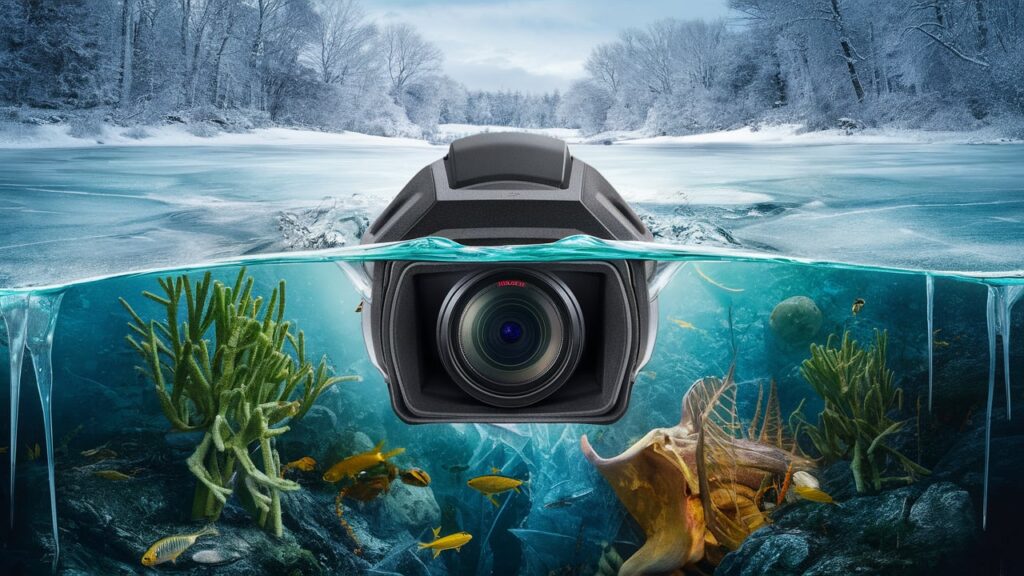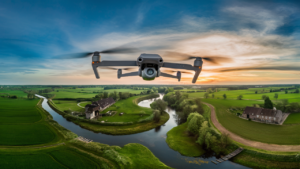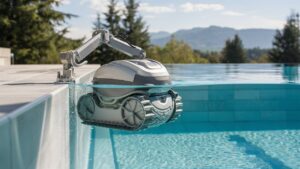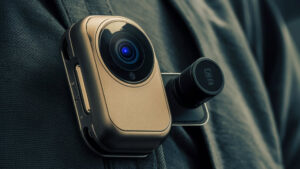Exploring beneath the ice reveals a hidden world. Underwater cameras play a crucial role in ice fishing.
Ice fishing has evolved with technology. Underwater cameras have become essential tools for anglers. These devices offer a unique view beneath the ice, helping fishermen see fish behavior and underwater terrain. This visual aid enhances the fishing experience, making it more engaging and productive.
With clearer insights, anglers can make better decisions on bait and location. This introduction to underwater cameras in fishing will uncover their benefits and how they change the way we fish. Dive in to learn more about this fascinating technology and its impact on ice fishing adventures.
Introduction To Underwater Cameras
Imagine peering into the icy depths of a frozen lake, discovering the hidden world beneath. This is made possible through the use of underwater cameras in fishing. These tools have become essential for modern anglers, allowing them to explore and understand underwater environments like never before.
Evolution Of Fishing Technology
Fishing technology has come a long way. Traditional methods relied on experience and luck. Fishermen used simple tools such as nets, hooks, and lines. They guessed the location of fish based on surface clues.
Over the years, technology evolved. Sonar devices became popular. They used sound waves to detect fish. Although effective, sonar had limitations. It could not show detailed images of underwater life.
Now, underwater cameras offer a new perspective. Anglers can see real-time images of fish and their habitats. This technology enhances the fishing experience. It reduces guesswork and increases success rates.
Importance Of Visual Tools
Visual tools are crucial in fishing. An underwater camera provides direct visual feedback. Anglers can observe fish behavior and adjust their strategies. This immediate feedback is invaluable.
Seeing underwater structures helps locate fish. Fishermen can identify hiding spots and feeding areas. They can also detect changes in the environment. This information helps make informed decisions.
Underwater cameras also aid in species identification. Different fish have unique behaviors and habitats. Recognizing these patterns improves targeting specific species. This leads to more effective and efficient fishing.
In summary, underwater cameras have transformed fishing. They blend technology with tradition, offering new insights and improving results. Whether a novice or experienced angler, these tools are indispensable.
How Underwater Cameras Work
Underwater cameras have become essential tools for ice fishing enthusiasts. They provide a clear view beneath the ice. This helps anglers locate fish and understand their behavior. But how do these cameras work? Let’s dive into the details of their components and image transmission.
Camera Components
Underwater cameras consist of several key components. The camera itself is waterproof and durable. It can withstand harsh underwater conditions. The lens is designed to capture clear images in low light. LEDs around the lens provide extra lighting. This helps in murky waters.
Another important part is the housing. It protects the camera and its electronics. The housing is often made from strong materials. This ensures the camera stays safe underwater.
Image Transmission
The camera captures images and sends them to a display unit. This process involves a cable or wireless transmission. Most underwater cameras use a cable. The cable is long enough to reach deep waters. It connects the camera to a monitor above the ice.
Some advanced cameras use wireless technology. This allows for easier movement. The images are transmitted in real-time. This helps anglers make quick decisions. Watching live footage of fish can be exciting and informative.
Understanding how underwater cameras work is fascinating. These devices bring the underwater world to life. They help anglers improve their fishing experience.
Types Of Underwater Cameras
Fishing under the ice can be challenging. Underwater cameras are essential for success. They allow you to observe fish behavior and choose the right spots. Let’s explore the different types available and their benefits.
Handheld Models
Handheld underwater cameras are portable and easy to use. These models are perfect for anglers who move frequently. You can quickly check different holes and see the underwater environment. Some popular features include:
- Compact design
- Rechargeable batteries
- High-resolution screens
With a handheld model, you can explore many areas in one trip. Their lightweight nature makes them convenient for travel.
Mounted Systems
Mounted underwater cameras are fixed in one spot. These systems are great for monitoring a specific area. They provide a stable view of the underwater world. Key advantages include:
- Hands-free operation
- Continuous monitoring
- Wide-angle lenses
Mounted systems often come with sturdy mounts. These keep the camera steady, even in strong currents. They are ideal for long fishing sessions.
To summarize, both types of cameras have unique benefits. Handheld models offer flexibility and mobility. Mounted systems provide stability and continuous observation. Choose the one that fits your fishing style best.
Benefits Of Using Underwater Cameras
Exploring beneath the ice opens up a new world of fishing possibilities. Underwater cameras have become an essential tool for many anglers. These cameras provide numerous benefits that enhance the fishing experience.
Enhanced Fish Detection
One of the biggest benefits is enhanced fish detection. With an underwater camera, you can see the fish in their natural habitat. This visual confirmation saves time and increases your chances of a successful catch.
Traditional methods may involve guesswork and patience. But, underwater cameras give you instant feedback. You can spot fish species, size, and behavior patterns. This information helps you make better decisions on where to place your bait.
Improved Bait Positioning
Underwater cameras also improve bait positioning. Seeing how fish react to your bait is crucial. You can adjust your tactics based on their behavior.
For example, if the fish ignore your bait, you can try different types. You might also change the bait’s position to entice them. This real-time feedback ensures your bait is always in the best spot.
Using an underwater camera can make a big difference in your ice fishing success. It provides clear visuals and helps you make informed choices. Happy fishing!
Challenges And Limitations
Exploring beneath the ice with underwater cameras can be thrilling. Yet, there are challenges and limitations. These can affect the success of your fishing trips. Understanding these obstacles will help you better prepare.
Water Clarity Issues
One of the main challenges is water clarity. Underwater cameras rely on clear water to capture good images. In murky water, it is hard to see anything. This is common in many lakes and rivers. Algae and debris can cloud the view. Even small particles can make a big difference. The camera’s light may not penetrate far enough. This results in blurry or dark images.
Weather also impacts water clarity. Rain and snow can stir up sediments. Wind can cause waves, mixing up the water. This makes it difficult to get clear footage. To tackle this, check the weather forecast. Choose days with calm conditions for better results.
Technical Difficulties
Technical difficulties are another limitation. Underwater cameras can face several technical issues. Battery life is often short in cold conditions. Cameras use more power to stay warm. This drains the battery quickly. Carry extra batteries and keep them warm to extend usage.
Signal interference is another problem. Ice and water can weaken the camera’s signal. This makes it hard to transmit video to the surface. Use high-quality cables and connectors to reduce interference. Test your equipment before heading out.
Lastly, setting up the camera can be tricky. Drilling holes through ice takes time and effort. Positioning the camera correctly is crucial. It must be stable and at the right angle. Use a tripod or mounting system to keep it steady. Practice setting up your gear at home before going fishing.
Addressing these challenges and limitations will improve your underwater fishing experience. With proper preparation, you can capture clear images and enjoy your adventure.
Selecting The Right Camera
Exploring beneath the ice brings a unique challenge for fishing enthusiasts. Selecting the right underwater camera can make all the difference. The right camera helps you see clearly and catch more fish.
Key Features To Consider
Several features are important when choosing an underwater camera. First, consider the camera’s resolution. Higher resolution cameras provide clearer images. Clear images help you spot fish more easily.
Battery life is another key factor. Longer battery life means more time for fishing. Some cameras offer up to 10 hours of battery life. This is ideal for a full day on the ice.
Next, think about the camera’s durability. Ice fishing conditions can be harsh. A durable camera will withstand cold temperatures and rough handling.
Also, check if the camera has a good LED light. Good lighting ensures better visibility under the ice. Some cameras come with adjustable LED lights for different conditions.
Top Brands And Models
Several brands stand out for their quality underwater cameras. One of the top brands is Aqua-Vu. Aqua-Vu offers models like the AV Micro 5.0. This model is known for its clear images and long battery life.
Another popular brand is MarCum. The MarCum VS485c model is highly recommended. It provides high-resolution images and is very durable.
Vexilar is another trusted name. The Vexilar FS800 Fish Scout is a top model. It has a strong battery life and excellent LED lighting.
Consider these brands and models when selecting your underwater camera. They offer reliability and quality for your ice fishing adventures.
Practical Tips For Using Underwater Cameras
Exploring beneath the ice with underwater cameras offers anglers a unique perspective. These devices can help you find fish and understand their behavior. To make the most of your underwater camera, follow these practical tips. They will improve your fishing experience and help you use your camera more effectively.
Optimal Settings
Setting up your underwater camera correctly is crucial. Begin by adjusting the brightness and contrast settings. Ensure the screen is clear and easy to read. Different water conditions require different settings. Clear water may need lower brightness, while murky water may need higher brightness.
Next, set the camera angle. Point the camera slightly downward. This view helps you see the fish and the bottom structure. Adjust the focus for a sharp image. Many cameras have auto-focus, but manual adjustment can sometimes give better results.
| Setting | Recommendation |
|---|---|
| Brightness | Adjust based on water clarity |
| Contrast | Ensure clear visibility |
| Camera Angle | Point slightly downward |
| Focus | Adjust for sharp image |
Best Practices For Maintenance
Maintaining your underwater camera ensures it works well for a long time. Start by cleaning the camera after each use. Wipe the lens with a soft cloth. This prevents scratches and keeps the image clear.
Check the cables and connections regularly. Look for any signs of wear or damage. Replace damaged parts immediately to avoid further issues. Store your camera in a dry and safe place. Moisture can damage the internal components.
- Clean lens after each use
- Inspect cables regularly
- Store in a dry place
Following these tips can enhance your fishing experience. By using the right settings and maintaining your equipment, you can explore beneath the ice more effectively.
Future Of Underwater Camera Technology
The future of underwater camera technology in fishing holds immense potential. These advancements promise to make the fishing experience more efficient and enjoyable. As technology evolves, underwater cameras are becoming more advanced and accessible.
Innovative Trends
Several innovative trends are shaping the future of underwater camera technology. One notable trend is the integration of artificial intelligence (AI). AI-powered cameras can identify different fish species and provide real-time data. This helps anglers make informed decisions.
Another trend is the development of wireless technology. Wireless cameras eliminate the need for cumbersome cables. They offer greater flexibility and ease of use. Some models even connect directly to smartphones and tablets, providing a seamless user experience.
The use of high-definition (HD) and 4K resolution is also growing. These cameras offer crystal-clear images, allowing anglers to see underwater environments in detail. This makes identifying fish and understanding underwater structures easier.
Potential Advancements
There are several potential advancements in underwater camera technology. One area of focus is improved battery life. Longer-lasting batteries ensure that cameras can be used for extended periods without interruption.
Another potential advancement is the incorporation of thermal imaging. Thermal imaging can help detect fish in low-visibility conditions. This technology can be particularly useful in murky waters or at night.
Enhanced waterproofing and durability are also on the horizon. Future cameras will be more resistant to harsh underwater conditions. This will increase their longevity and reliability.
We may also see the development of miniature cameras. These compact devices can be attached to fishing lures or lines. They provide a unique perspective and can help anglers understand fish behavior.
| Innovative Trends | Potential Advancements |
|---|---|
| AI-powered cameras | Improved battery life |
| Wireless technology | Thermal imaging |
| HD and 4K resolution | Enhanced waterproofing |
| Miniature cameras |
As these trends and advancements continue to evolve, the future of underwater camera technology in fishing looks promising. Anglers can look forward to more innovative and efficient tools to enhance their fishing experiences.

Frequently Asked Questions
What Are Underwater Cameras For Fishing?
Underwater cameras help anglers see beneath the water’s surface. They provide real-time visuals of fish and underwater structures. This helps in making informed fishing decisions.
How Do Underwater Fishing Cameras Work?
Underwater fishing cameras use waterproof technology to capture underwater visuals. They transmit live video to a screen above water. This lets anglers see fish activity and underwater terrain.
Are Underwater Fishing Cameras Effective?
Yes, underwater fishing cameras are highly effective. They offer real-time views, helping anglers locate fish. This increases chances of a successful catch.
What Features To Look For In An Underwater Fishing Camera?
Look for features like high resolution, waterproofing, and battery life. Night vision and wide-angle lenses are also beneficial. These features enhance visibility and usability.
Conclusion
Underwater cameras transform fishing experiences. They offer clear views beneath the ice. Anglers can spot fish easily and understand their behavior. This leads to better fishing strategies. Investing in an underwater camera boosts success. It makes fishing trips more enjoyable and productive.
So, embrace this technology. Enjoy the thrill of seeing underwater life in real time. Happy fishing!








